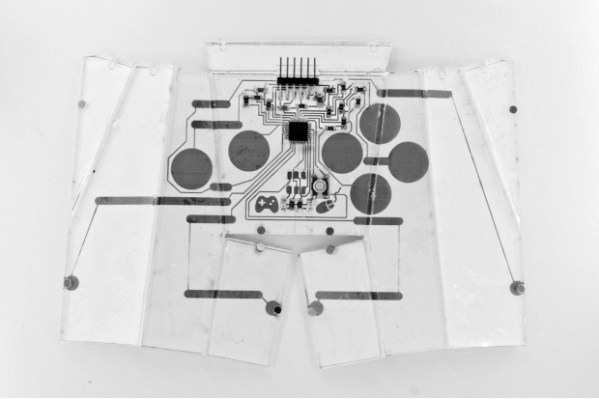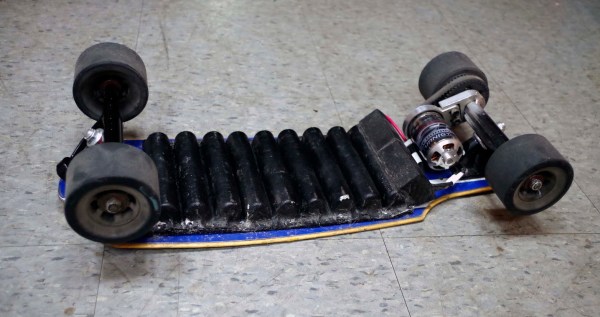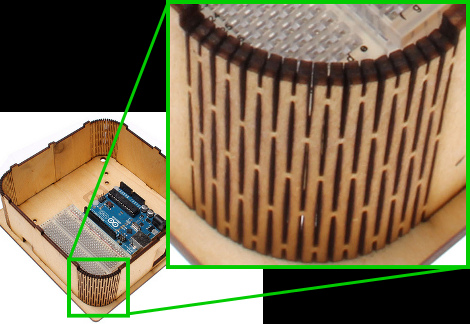Still working with PCBs in 2D? Not [Yoav]. With some clever twists on the way we fab PCBs, he’s managed to create a state-aware foldable circuit board that responds to different configurations.
From his paper [PDF warning], [Yoav] discusses two techniques for developing foldable circuits that may be used repeatedly. The first method involves printing the circuit onto a flexible circuit board material and then bound front-and-back between two sheets of acrylic. Valid folded edges are distinguished by the edges of individual acrylic pieces. The second method involves laying out circuits manually via conductive copper tape and then exposing pads to determine an open or closed state.
Reconfigurable foldable objects may open the door for many creative avenues; in the video (after the break), [Yoav] demonstrates the project’s state-awareness with a simple onscreen rendering that echoes its physical counterpart.
While these circuits are fabbed from a custom solution, not FR1 or FR4, don’t let that note hold your imagination back. In fact, If you’re interested with using PCB FR4 as a structural element, check out [Voja’s] comprehensive guide on the subject.
Continue reading “State-Aware Foldable Electronics Enters The Third Dimension”



 [Ben]’s pack fits 18 cells which he soldered together with some flexible copper grounding wire. The top side of the enclosure is covered with a layer of insulating rubber, and the rim is covered with a soft foam to form a gasket against the board. As you can see, the pack bends really well with the board, and it doesn’t look like [Ben] has had any issues with his design so far. Check out [Ben]’s blog for more info and for more details on the overall design of his board.
[Ben]’s pack fits 18 cells which he soldered together with some flexible copper grounding wire. The top side of the enclosure is covered with a layer of insulating rubber, and the rim is covered with a soft foam to form a gasket against the board. As you can see, the pack bends really well with the board, and it doesn’t look like [Ben] has had any issues with his design so far. Check out [Ben]’s blog for more info and for more details on the overall design of his board.











